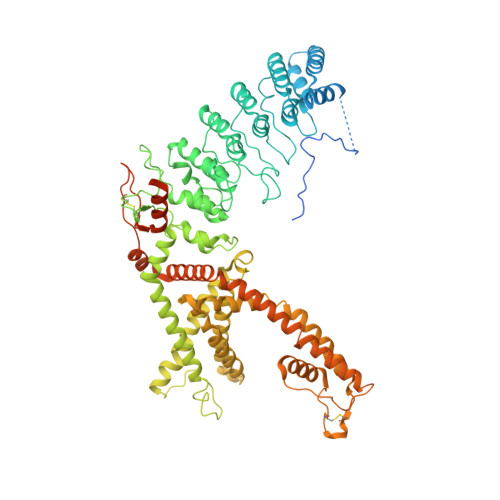TRPV3 activation by different agonists accompanied by lipid dissociation from the vanilloid site.
Nadezhdin, K.D., Neuberger, A., Khosrof, L.S., Talyzina, I.A., Khau, J., Yelshanskaya, M.V., Sobolevsky, A.I.(2024) Sci Adv 10: eadn2453-eadn2453
- PubMed: 38691614
- DOI: https://doi.org/10.1126/sciadv.adn2453
- Primary Citation of Related Structures:
8V6K, 8V6L, 8V6M, 8V6N, 8V6O - PubMed Abstract:
TRPV3 represents both temperature- and ligand-activated transient receptor potential (TRP) channel. Physiologically relevant opening of TRPV3 channels by heat has been captured structurally, while opening by agonists has only been observed in structures of mutant channels. Here, we present cryo-EM structures that illuminate opening and inactivation of wild-type human TRPV3 in response to binding of two types of agonists: either the natural cannabinoid tetrahydrocannabivarin (THCV) or synthetic agonist 2-aminoethoxydiphenylborane (2-APB). We found that THCV binds to the vanilloid site, while 2-APB binds to the S1-S4 base and ARD-TMD linker sites. Despite binding to distally located sites, both agonists induce similar pore opening and cause dissociation of a lipid that occupies the vanilloid site in their absence. Our results uncover different but converging allosteric pathways through which small-molecule agonists activate TRPV3 and provide a framework for drug design and understanding the role of lipids in ion channel function.
- Department of Biochemistry and Molecular Biophysics, Columbia University, New York, NY, USA.
Organizational Affiliation:



















